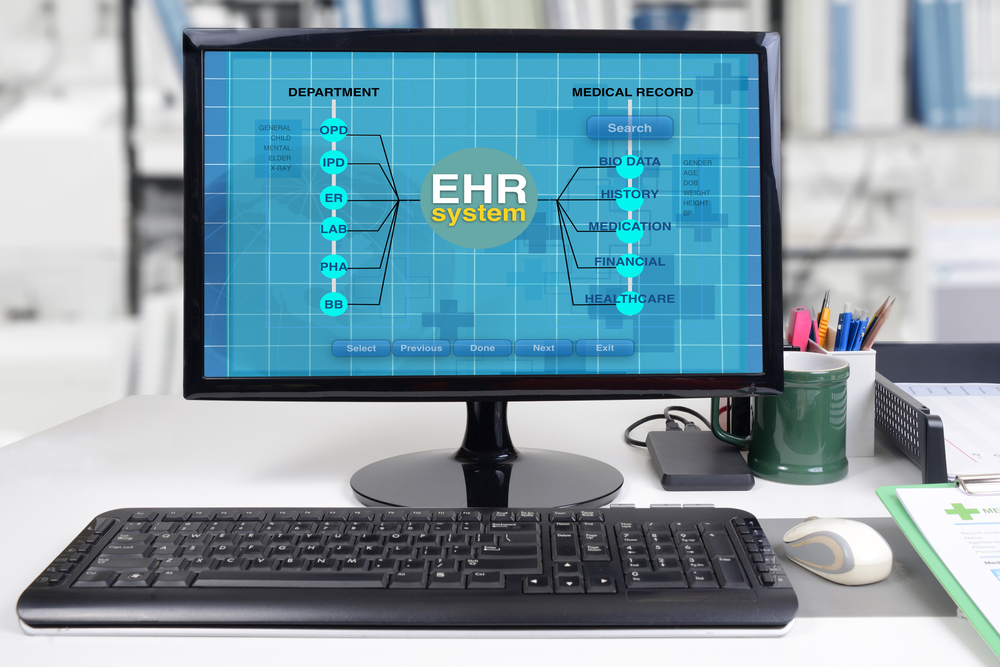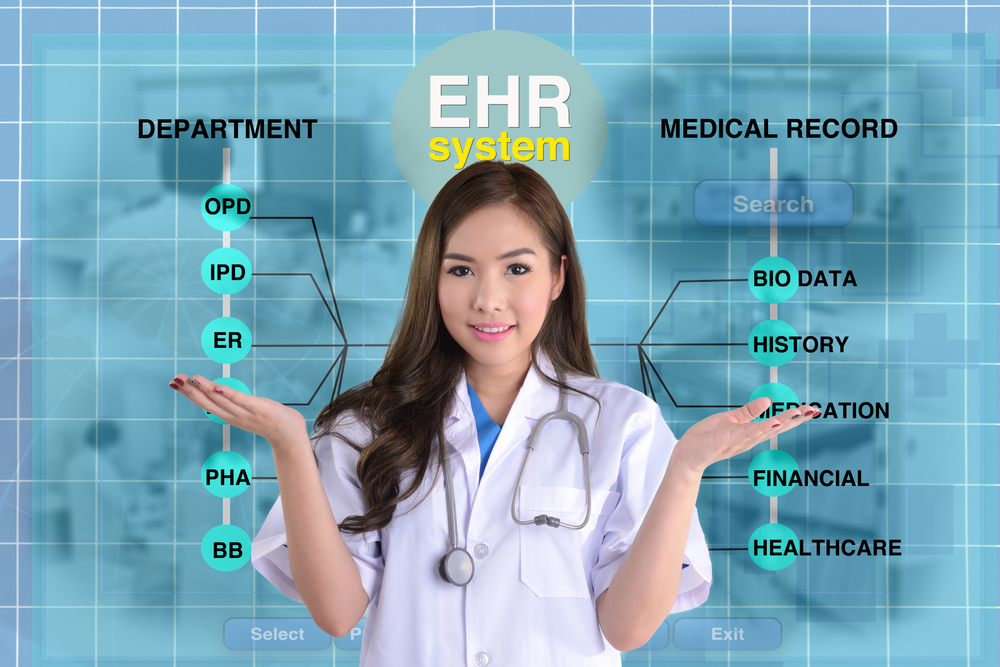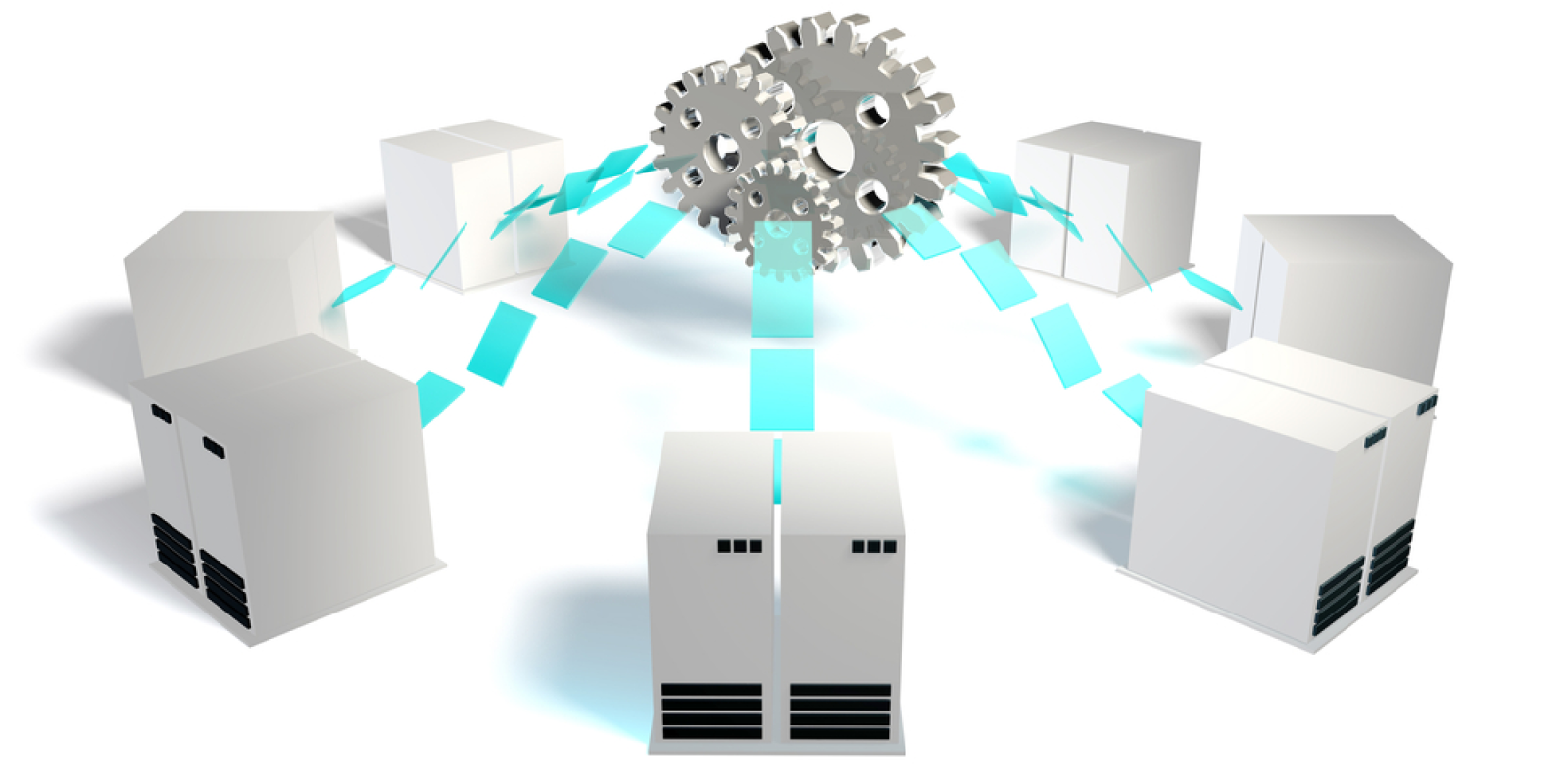Healthcare is a vital industry worldwide, but it is also a complex and constantly evolving one. One of the most significant changes is the shift from paper-based medical records to electronic medical records (EMR). Electronic medical records have become essential to healthcare, transforming how healthcare providers store and access patient information.
Healthcare is a vital industry worldwide, but it is also a complex and constantly evolving one. One of the most significant changes is the shift from paper-based medical records to electronic medical records (EMR). Electronic medical records have become essential to healthcare, transforming how healthcare providers store and access patient information.
WHAT IS EHR (ELECTRONIC HEALTH RECORD), AND HOW DOES IT WORK?Read also:
However, with the increasing amount of data being collected, it can be overwhelming for doctors and nurses to keep track of everything. That’s where Smart EMR comes in. Smart EMRs have the potential to elevate and enhance the quality of medical care, efficiency, effectiveness, and safety by digitizing health information and streamlining the process of transmitting it between diverse parties.
The value of the smart healthcare market worldwide is projected to go from $153.6 billion in 2021 to reach $840.83 billion by 2030, growing at a CAGR of 13.4%. The expansion of the industry is due in large part to the rising popularity of mobile health apps and the Internet of Things. In the long run, smart technology will allow hospitals and clinics to run more smoothly, save money, and improve the health of their patients.
In this article, we will explore what Smart EMRs are, their architecture, how they work, and their benefits.
Need Help Integrating EHR Systems?
Let's ChatWhat is Smart EMR?
Smart EMR is a cloud-based electronic medical record system that allows medical professionals within an organization to view patient records from anywhere in the world. All they need to do is log into the cloud-based Smart EMR system via a computer, tablet, or smartphone, and they will have instantaneous access to their patient’s medical records.
Its goal is to obtain health assessments that are as accurate as possible and help in patient care by spreading important information and bringing attention to possible risks.

Functional Aspects of a Smart EMR
Smart EMR keeps track of a huge number of patient health records in an organized way by using some functional parts. Below are some of the functional parts of a Smart EMR
- Personal Records: This is part of a smart EMR that contains the entirety of a patient’s medical history.
- Virtual Health Record: refers to Smart EMR’s central component, which generates and maintains people’s personal records within a healthcare organization. VHR relies on specific information about the patient’s condition that is readily available. VHR collects this information in order to learn about a person’s general health, medical background, and the services provided to them as a whole.
- Intelligent Agent or Broker: Created by the Smart EMR, this represents the health of an individual by using data from that person’s Virtual Health Record (VHR). The intelligent or smart agent then communicates with medical staff to tell them about a patient’s overall health, suggest potential treatments, and aid in the process of diagnosing and treating the patient1.
FHIR STANDARD: THE CRUCIAL HEALTHCARE DATA SOLUTION FOR SECURE INTEROPERABILITYRead also:
Smart EMR’s Architecture
Three main components make up the Smart EMR software system. The layers are easy to tell apart based on what they do and what kind of technology they use. Several parts make up each successive layer.
First Layer
The first layer of the Smart EMR is made up of local applications that connect the VHR to other care and health systems. It is made up of RFID tags, sensors, or other smart objects and devices that watch their immediate surroundings for changes that could affect a patient’s health and care and then report those changes to a virtual health record (VHR).
In order to alert people or alter their surroundings, the VHR sends commands to actuators, which then carry them out. A different driver controls each of these context devices, which use a variety of different protocols to send or receive data to or from the second layer.
Users (including patients, healthcare providers, etc.) can also gain immediate access to the Smart EHR via this layer. They are able to do this through the smart EMR’s dashboards, which provide insights into analytics and health event processing, as well as its mobile apps, web-based front-ends, and portals for user interaction.
Second Layer
To fully incorporate the components of the first layer into the system, a second layer of adapters and wrappers is required. The main job of the second layer is to manage the devices in the first layer, which is needed for the system integration of the first layer to work.
With this layer, devices can be found, and their access can be controlled. They can also be added or removed from a network, locked or unlocked, their functions can be turned on or off, and their availability can be tracked, among other things.
Third Layer
In the third tier, referred to as “data communication and integration,” messages are compiled and sent out. All three access methods to the VHR utilize its unified service interface. As an added bonus, it sends out VHR alerts to everyone who has subscribed to the service.
The Intelligent Broker is the backbone of the Smart EMR software system architecture and a key part of this layer. Here, messages from different sources that use different communication protocols (like HTTP/HTTPS, application-specific, or message queuing protocols) can be processed, enriched, and combined before being sent to their respective destinations.
How Does Smart EMR Work?
Using a three-stage process, Smart EMR records events as they unfold in the real world in the virtual one, thus bringing the real world into the virtual one. These steps are highlighted below:
HOW THE HEALTHCARE INDUSTRY BENEFITS FROM HYBRID CLOUD SOLUTIONSRead also:
Step One:
Smart EMR digitally compiles any key observations made over time by healthcare providers regarding the individual’s health, including observations of her/his living environment and lifestyle;
Step Two:
Smart EMR puts all the readings and observations gotten in step one in context by determining how they relate to one another using a digitized version of a traditional model of health and wellness;
Step Three
It then uses the analytical processing of all of this data to recreate in the virtual environment parts of reality that are important to the health of the person. Doing this can help paint a more complete picture and analysis of the patient’s health, which may be used to inform and improve subsequent diagnostic and therapeutic efforts. The smart analysis of an individual’s health is known as the “Health Digital State (HDS).”
Benefits of Smart EMR
The services supplied by a smart EMR go above and beyond what is possible with conventional EMRs. A few of such benefits include:
- Coverage
Because the Smart EMR’s business domain is richer in concepts and semantic links, the Smart EMRs are far more helpful, powerful, and adaptable than present EMRs.

- Rapid Decision Making
Smart EMRs are more concerned with treatment procedures than with the mere administration of patient records. By this method, doctors can get a more complete picture of their patient’s health and use that to make more informed recommendations on the best course of therapy.
- Extended Patient Analytics
Using data analytics, Smart EMR can give detailed answers to questions about a patient’s current health and medical history. It can also support any multi-criteria decision-support logic to ensure care is given according to evidence-based best practices. It also considers the results of any credible claim about how the population’s health has changed over time.
- Improved Care Delivery
The Smart EMR’s proactive nature means it is more than just a reliable data repository; it is an integral element of a team effort that benefits everyone involved in providing high-quality, person-centered care.
- Streamlined Workflows
Healthcare professionals’ workflows that rely on evidence-based decisions and the wide range of quality management and outcome reporting services can all be effectively supported by Smart EMR.
- Digital Health State
Smart EMR can create a digital surrogate of an individual’s true health from its collection of information and knowledge, hence promoting novel situations in health and care systems. Experts refer to this as the “digital health state.”
Implementation and Integration of Smart EMRs in Healthcare Settings

Putting these systems into place and making sure they work together can be a complicated process that needs careful planning and thought. We’ll discuss some of the steps in the implementation below.
HOW TO MAKE EHR/EMR EPIC INTEGRATION WITH YOUR HEALTH APPRead also:
Assess Your Infrastructure State and Readiness
Implementing smart EMRs begins with an evaluation of your organization’s readiness. The current IT infrastructure and readiness to adopt new technologies must be checked. During the process, potential implementation barriers are identified and mitigated. Key stakeholders must come in this process, including clinicians, administrators, and software development experts.
Choose a Compliant and Competent Vendor
The vendor should have a proven track record in developing and implementing smart EMRs and the ability to customize the system to meet the organization’s specific needs. Involve healthcare professionals in the provider selection to ensure the system meets their needs and workflows.
Work with an Experienced Healthcare Company for EHR Integration
See the List of ServicesCollaborate and Setup
Work with your Smart EMR provider to configure and customize the system to meet your needs. At this stage, you’ll need to map out workflows and integrate them with other IT systems within the organization, such as electronic prescribing and laboratory information systems.
Train Your Workforce to Maximize the Smart EHR Efficiency
Educate your healthcare staff on how to use the system effectively, including entering data, retrieving information, and interpreting the system’s output. Make sure the training and actively provide support so that ensure that employees become comfortable with using the system.

Adhere to HIPAA Regulations & Other Policies
Establish policies and procedures for using smart EMRs. Some policies include defining roles and responsibilities, access controls and security measures, and ensuring compliance with relevant laws and regulations, such as HIPAA.
STEP-BY-STEP GUIDE ON MOBILE APP HIPAA COMPLIANCERead also:
Conclusion
As the healthcare industry continues to change, there is no doubt that smart EMRs will play an increasingly important role in giving high-quality, patient-centered care. It is exciting to think about how smart EMRs could keep changing the healthcare industry and making people’s health better all over the world.
While there are challenges (like cost, data security and privacy concerns, staff training, limited access, etc) to implementing smart EMR, the potential benefits are too significant to ignore. As time goes on, we can expect more healthcare providers to adopt smart EMRs to improve their quality of care.
Are you looking for a way to streamline your medical practice’s workflow and your healthcare software with the latest technology?
The APP Solutions has you covered.
We Can Help You Develop Custom Software Products.
Learn MoreHowever, with the increasing amount of data being collected, it can be overwhelming for doctors and nurses to keep track of everything. That’s where Smart EMR comes in. Smart EMRs have the potential to elevate and enhance the quality of medical care, efficiency, effectiveness, and safety by digitizing health information and streamlining the process of transmitting it between diverse parties.
The value of the smart healthcare market worldwide is projected to go from $153.6 billion in 2021 to reach $840.83 billion by 2030, growing at a CAGR of 13.4%. The expansion of the industry is due in large part to the rising popularity of mobile health apps and the Internet of Things. In the long run, smart technology will allow hospitals and clinics to run more smoothly, save money, and improve the health of their patients.
In this article, we will explore what Smart EMRs are, their architecture, how they work, and their benefits.
Need Help Integrating EHR Systems?
Let's ChatWhat is Smart EMR?
Smart EMR is a cloud-based electronic medical record system that allows medical professionals within an organization to view patient records from anywhere in the world. All they need to do is log into the cloud-based Smart EMR system via a computer, tablet, or smartphone, and they will have instantaneous access to their patient’s medical records.
Its goal is to obtain health assessments that are as accurate as possible and help in patient care by spreading important information and bringing attention to possible risks.

Functional Aspects of a Smart EMR
Smart EMR keeps track of a huge number of patient health records in an organized way by using some functional parts. Below are some of the functional parts of a Smart EMR
- Personal Records: This is part of a smart EMR that contains the entirety of a patient’s medical history.
- Virtual Health Record: refers to Smart EMR’s central component, which generates and maintains people’s personal records within a healthcare organization. VHR relies on specific information about the patient’s condition that is readily available. VHR collects this information in order to learn about a person’s general health, medical background, and the services provided to them as a whole.
- Intelligent Agent or Broker: Created by the Smart EMR, this represents the health of an individual by using data from that person’s Virtual Health Record (VHR). The intelligent or smart agent then communicates with medical staff to tell them about a patient’s overall health, suggest potential treatments, and aid in the process of diagnosing and treating the patient1.
FHIR STANDARD: THE CRUCIAL HEALTHCARE DATA SOLUTION FOR SECURE INTEROPERABILITYRead also:
Smart EMR’s Architecture
Three main components make up the Smart EMR software system. The layers are easy to tell apart based on what they do and what kind of technology they use. Several parts make up each successive layer.
First Layer
The first layer of the Smart EMR is made up of local applications that connect the VHR to other care and health systems. It is made up of RFID tags, sensors, or other smart objects and devices that watch their immediate surroundings for changes that could affect a patient’s health and care and then report those changes to a virtual health record (VHR).
In order to alert people or alter their surroundings, the VHR sends commands to actuators, which then carry them out. A different driver controls each of these context devices, which use a variety of different protocols to send or receive data to or from the second layer.
Users (including patients, healthcare providers, etc.) can also gain immediate access to the Smart EHR via this layer. They are able to do this through the smart EMR’s dashboards, which provide insights into analytics and health event processing, as well as its mobile apps, web-based front-ends, and portals for user interaction.
Second Layer
To fully incorporate the components of the first layer into the system, a second layer of adapters and wrappers is required. The main job of the second layer is to manage the devices in the first layer, which is needed for the system integration of the first layer to work.
With this layer, devices can be found, and their access can be controlled. They can also be added or removed from a network, locked or unlocked, their functions can be turned on or off, and their availability can be tracked, among other things.
Third Layer
In the third tier, referred to as “data communication and integration,” messages are compiled and sent out. All three access methods to the VHR utilize its unified service interface. As an added bonus, it sends out VHR alerts to everyone who has subscribed to the service.
The Intelligent Broker is the backbone of the Smart EMR software system architecture and a key part of this layer. Here, messages from different sources that use different communication protocols (like HTTP/HTTPS, application-specific, or message queuing protocols) can be processed, enriched, and combined before being sent to their respective destinations.

How Does Smart EMR Work?
Using a three-stage process, Smart EMR records events as they unfold in the real world in the virtual one, thus bringing the real world into the virtual one. These steps are highlighted below:
HOW THE HEALTHCARE INDUSTRY BENEFITS FROM HYBRID CLOUD SOLUTIONSRead also:
Step One:
Smart EMR digitally compiles any key observations made over time by healthcare providers regarding the individual’s health, including observations of her/his living environment and lifestyle;
Step Two:
Smart EMR puts all the readings and observations gotten in step one in context by determining how they relate to one another using a digitized version of a traditional model of health and wellness;
Step Three
It then uses the analytical processing of all of this data to recreate in the virtual environment parts of reality that are important to the health of the person. Doing this can help paint a more complete picture and analysis of the patient’s health, which may be used to inform and improve subsequent diagnostic and therapeutic efforts. The smart analysis of an individual’s health is known as the “Health Digital State (HDS).”
Benefits of Smart EMR
The services supplied by a smart EMR go above and beyond what is possible with conventional EMRs. A few of such benefits include:
- Coverage
Because the Smart EMR’s business domain is richer in concepts and semantic links, the Smart EMRs are far more helpful, powerful, and adaptable than present EMRs.

- Rapid Decision Making
Smart EMRs are more concerned with treatment procedures than with the mere administration of patient records. By this method, doctors can get a more complete picture of their patient’s health and use that to make more informed recommendations on the best course of therapy.
- Extended Patient Analytics
Using data analytics, Smart EMR can give detailed answers to questions about a patient’s current health and medical history. It can also support any multi-criteria decision-support logic to ensure care is given according to evidence-based best practices. It also considers the results of any credible claim about how the population’s health has changed over time.
- Improved Care Delivery
The Smart EMR’s proactive nature means it is more than just a reliable data repository; it is an integral element of a team effort that benefits everyone involved in providing high-quality, person-centered care.
- Streamlined Workflows
Healthcare professionals’ workflows that rely on evidence-based decisions and the wide range of quality management and outcome reporting services can all be effectively supported by Smart EMR.
- Digital Health State
Smart EMR can create a digital surrogate of an individual’s true health from its collection of information and knowledge, hence promoting novel situations in health and care systems. Experts refer to this as the “digital health state.”
Implementation and Integration of Smart EMRs in Healthcare Settings

Putting these systems into place and making sure they work together can be a complicated process that needs careful planning and thought. We’ll discuss some of the steps in the implementation below.
HOW TO MAKE EHR/EMR EPIC INTEGRATION WITH YOUR HEALTH APPRead also:
Assess Your Infrastructure State and Readiness
Implementing smart EMRs begins with an evaluation of your organization’s readiness. The current IT infrastructure and readiness to adopt new technologies must be checked. During the process, potential implementation barriers are identified and mitigated. Key stakeholders must come in this process, including clinicians, administrators, and software development experts.
Choose a Compliant and Competent Vendor
The vendor should have a proven track record in developing and implementing smart EMRs and the ability to customize the system to meet the organization’s specific needs. Involve healthcare professionals in the provider selection to ensure the system meets their needs and workflows.
Work with an Experienced Healthcare Company for EHR Integration
See the List of ServicesCollaborate and Setup
Work with your Smart EMR provider to configure and customize the system to meet your needs. At this stage, you’ll need to map out workflows and integrate them with other IT systems within the organization, such as electronic prescribing and laboratory information systems.
Train Your Workforce to Maximize the Smart EHR Efficiency
Educate your healthcare staff on how to use the system effectively, including entering data, retrieving information, and interpreting the system’s output. Make sure the training and actively provide support so that ensure that employees become comfortable with using the system.

Adhere to HIPAA Regulations & Other Policies
Establish policies and procedures for using smart EMRs. Some policies include defining roles and responsibilities, access controls and security measures, and ensuring compliance with relevant laws and regulations, such as HIPAA.
STEP-BY-STEP GUIDE ON MOBILE APP HIPAA COMPLIANCERead also:
Conclusion
As the healthcare industry continues to change, there is no doubt that smart EMRs will play an increasingly important role in giving high-quality, patient-centered care. It is exciting to think about how smart EMRs could keep changing the healthcare industry and making people’s health better all over the world.
While there are challenges (like cost, data security and privacy concerns, staff training, limited access, etc) to implementing smart EMR, the potential benefits are too significant to ignore. As time goes on, we can expect more healthcare providers to adopt smart EMRs to improve their quality of care.
Are you looking for a way to streamline your medical practice’s workflow and your healthcare software with the latest technology?
The APP Solutions has you covered.
We Can Help You Develop Custom Software Products.
Learn More